Kampala’s main mini bus taxi grounds commonly known as Old Kampala Park (Pank Enkadde) is a metropolitan marvel to anyone visiting Uganda. While praised at being one of the city’s central landmarks by some, others such as urban planners call it a spectacular failure in the development of the nation’s capital. The city’s main planning and administration body Kampala Capital City Authority (KCCA) previously known as Kampala City Council (KCC) has long been an opponent of the existence of the taxi park calling it the epitome of congestion, like a blot or stain in the central business district. However, many of Kampala’s residents and visitors view its existence and location as vital point of transportation and point of familiarization with the city. One could say that you have not been to Kampala if you have not been witness to the hustle and bustle of the Old Taxi Park.

To a certain extent, it is true that the earlier planners of Kampala city did not envision its expansion and so permitted the development of this staging area into the city’s main taxi park. Over the years, corruption and transport labour union wars between the central government and taxi operators known as Uganda Taxi Operators and Drivers Association (UTODA) and counter accusations of political motives have ensured the existence of the park to date. Despite vehement opposition to its continued operation, Kampala’s transport system lifeline has remained standing. One of the main reasons it has continued to operate is because it provides many of Kampala’s commuters, residents and workers with a transport linkage to the various suburbs that dot the city’s borders.
Understanding Kampala’s residential areas, neighborhoods and suburbs can be best understood with a “walk” through the Old Taxi Park. Here, you will find a myriad of locations and places that provide a quick understanding of the city. Most international travelers agree that London city can be best understood and navigated through its train subway system known as the “Tube”. In the case of Uganda, getting a clear picture of its main capital is well illustrated through the Old Taxi Park.
Familiarizing oneself with Kampala can best be achieved by understand where its inhabitants live, work and play. Therefore, in order to understand where most people in Kampala live, we shall attempt to deconstruct the city’s administration structures, dissect its traffic patterns and map taxi park arrangement to better understand insights into residential demographics.
Kampala even as the nation’s main capital is still a district according to Uganda’s local government structures. This means just like any other district, it has sub counties, parishes and villages which define its hierarchical arrangement. According to city planning economics, instead of sub counties, Kampala is segmented into divisions each with its own mayor and local councils. Its small geographical size has limited it to five divisions known as Nakawa, Makindye, Rubaga, Kawempe and Kampala Central. The majority of its residents live in these divisions although a substantial portion of those working in it commute from districts outside Kampala mainly Entebbe, Wakiso and Mukono.
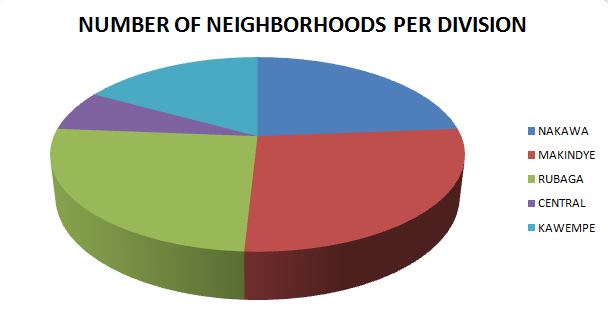
According to the 2014 National Census Figures, Kampala’s residential population is distributed slightly evenly among the divisions as illustrated in the graphs below. Makindye stands out as being home to most of the city’s residents with Kampala Central division holding the least.
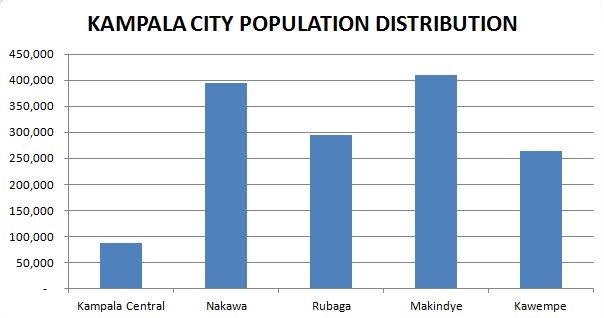
With these figures in mind, we can attempt to map the volume of taxis in the Old Kampala Park to these divisions and ascertain whether this is a true reflection. In other words, can we tell whether residents from Makindye are the largest by observing the volume of passengers and number of taxi staging areas in the park?
According to the staging areas in the Old Taxi Park, one can see the most of these are dominated by taxis from Makindye.
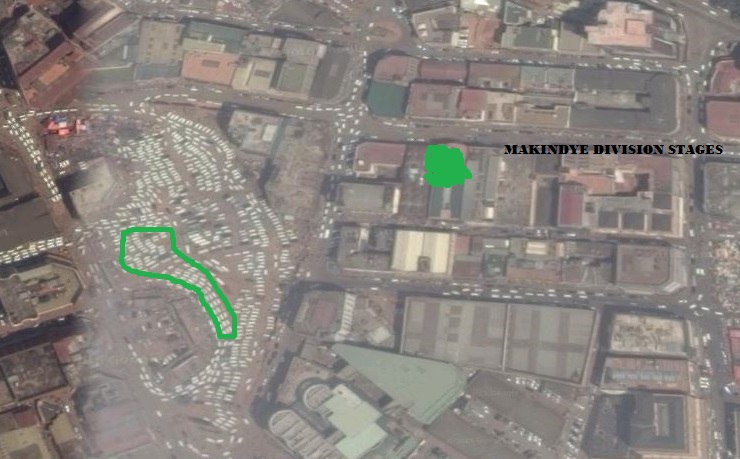
This is partly because of the nature of Makindye as a division. It is known for having the most neighborhoods in comparison to others.

On the other hand, in regards to the volume of passengers boarding and disembarking, taxis that plow the Makindye route, the frequencies are sporadic. This is such that it takes between 5 minutes and less for taxi going there to fill up. This revelation according to the Old Taxi Park, deduces that most of Kampala’s inhabitants reside in Makindye Division
Nakawa Division according to residential population figures is the second most populous.

However, when compared to staging areas in the Old Taxi Park, passengers to the area are quite few.
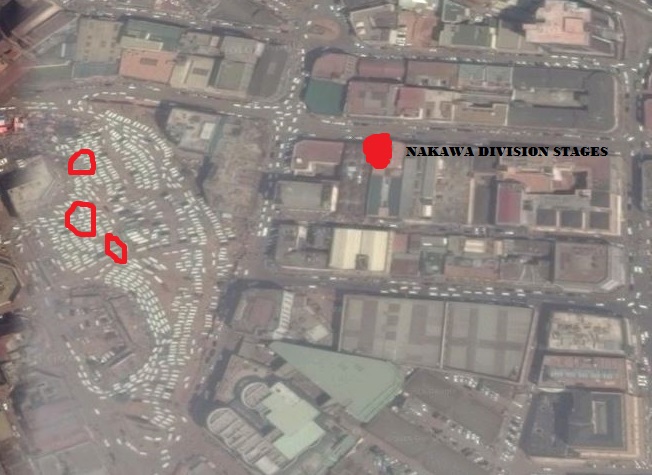
In terms of passenger volumes boarding and disembarking, we observe a different pattern. Some neighbourhoods in Nakawa division have more of their passengers board from the taxi park compared to others. For instance, those travelling to Luzira, Butabika, Mbuya and Nabisunsa tend to use the taxi park more compared to those traversing the Ntinda, Bugolobi, Nagure areas. Therefore, despite the second most popular residential area in Kampala, this is not reflected in the Old Taxi Park. Taxi operators and touts explain this discrepancy due to the existence of taxi staging areas outside the Old Taxi Park such as those operating along Jinja road and Bombo road. This means according to the Old Taxi Park, the least number of Kampala’s inhabitants reside in Nakawa Division.
Rubaga division as the third most popular residential area for Kampala’s inhabitants provides interesting insights when analyzed in terms of passenger volumes and staging area placement in the Old Taxi Park.

The largest portions of staging areas in the Old Taxi Park are taken by taxis that operate in Rubaga Division. When it comes to the numbers of passengers boarding and disembarking, these seem to be the highest than any other area.
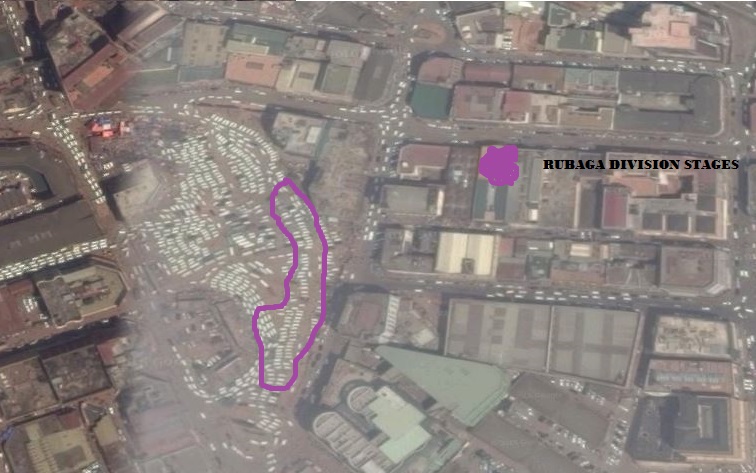
This reveals a hidden insight into Kampala’s inhabitants, the truth being that most of working people in Kampala (by this I mean the informal sector such as hawkers, shop retailers, vendors and manual laborers) are residents of popular neighborhoods in the division such as Nateete, Namungona, Kasubi and Kawala. This places the division as the second most popular residential zone for Kampala’s inhabitants according to the Old Taxi Park.
Kawempe Division is a popular area in the city known for all the bad reasons. At one time it was known as the epitome of Kampala’s decaying drainage system as witnessed in the countless press stories and personal accounts of the menace of flooding most especially in the rainy seasons. Kawempe boasts of being the only place in Kampala where you could once “enjoy” a boat ride without having to go to Entebbe more so leave the comfort of your home.

As the fourth most popular residential area in Kampala, its neighborhoods have long been a source of the city’s labor force and more common “Bwaise and Kalerwe riot enclaves” due its tendency of being a political opposition hotbed.
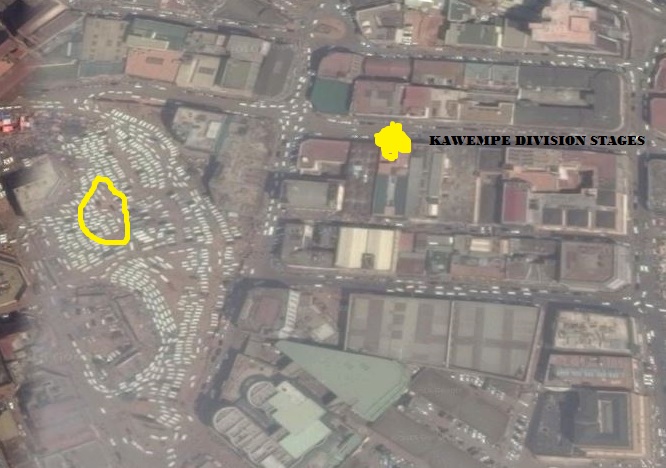
According to staging area placement in the Old Taxi park, commuters to this area are reserved in numbers. However, the volume of passengers boarding and disembarking is sporadic and its does not take more than five minutes for a taxi to fill up which illustrates Kawempe Division as the third most popular residential area for Kampala’s commuters according to the Old Taxi Park.
Despite Kampala being the capital city, one would operate on the assumption that skyscrapers dominate the landspace. However, due to the historical urban planning decisions, the city still provides residential area for its residents are observed in some of its popular inner city areas such as Nakasero and Kisenyi.

Taxi staging area placements and passenger boarding patterns are minimal due to the limited. One infact is much better off taking a boda boda or walking to these areas than using a taxi since proximity within the city is within reach.
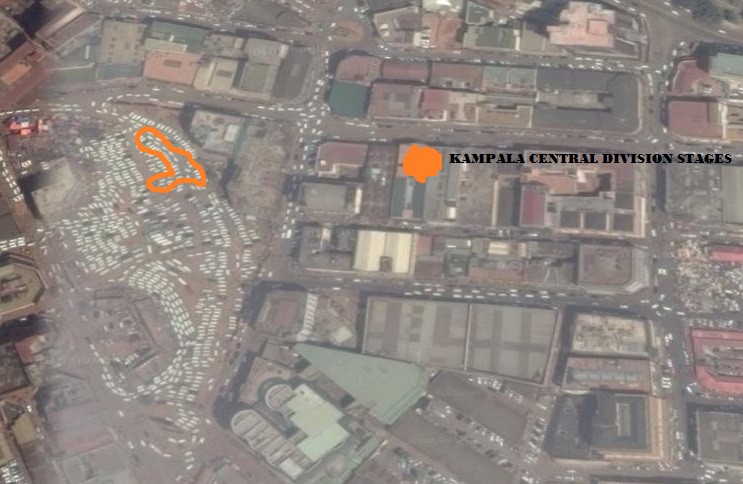
This places Kampala Central Division as the least popular or affordable residential area among commuters in Kampala.
From such insights within Park Enkadde, one is able to understand the demographics of Kampala’s residents as well observe the representation of the city’s largely informal sector. The Old Taxi Park will continue to exist as one of the city’s main urban tourism landmarks and public transport provider not because of a matter of beauty or location but rather as consequence of convenience.
2 thoughts on “Where people live in Kampala according to the Old Taxi Park.”